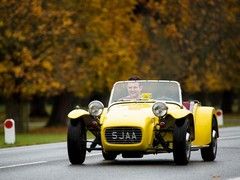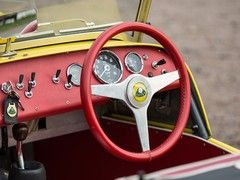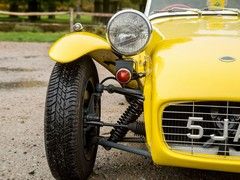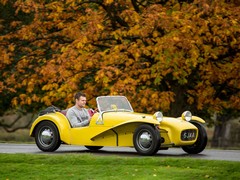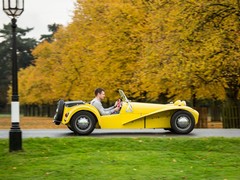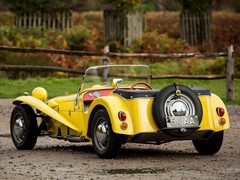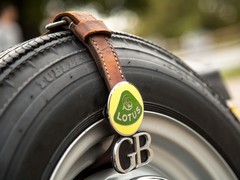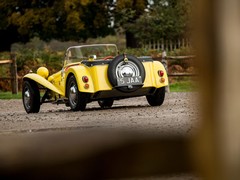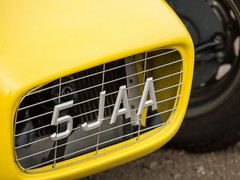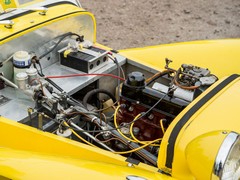Best British Car ever?
10 contenders line up with a chance of this accolade; Caterham fan boy Matt gets to drive one close to his heart
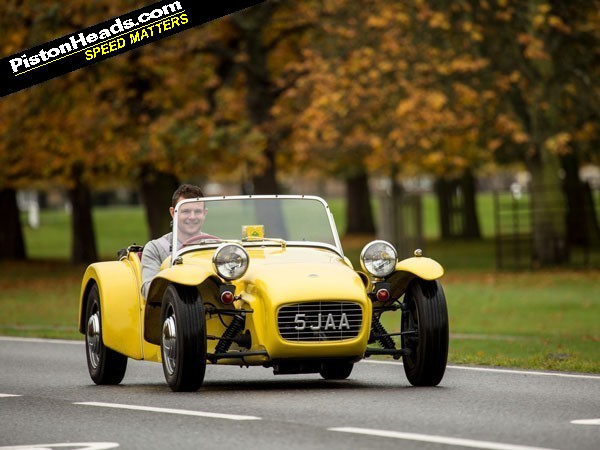
So when the opportunity arose for a drive in an original Lotus Seven ahead of this weekend's Classic & Sports Car show, at which it could be voted 'Best British Car ever', nothing was going to stand in the way. Not even late October.
The yellow Seven you see here is owned by Terry Tumber, huge Lotus enthusiast and keeper of this car since 2004. It is in fact the very Seven that will be on display at the Classic & Sports Car show this weekend as part of the 'best British car ever' competition. "I'd better get home and clean it," Terry says once or twice during our shoot. Of course it would be a huge surprise to see it win, but the chance to spend some time in such a special little car wasn't going to be passed up. We'll get the McLaren F1 another time...
Terry's car is an S2 Super Seven 1500, made in 1963 and one of 1,310 Sevens made between 1960 and 1968. Interestingly it's one of just six cars made with Lotus's own inlet manifold. After being purchased by a farmer in 1967 and driven for a couple of years, it was left to rot between two barns before being rescued and totally restored in the early 90s. With a higher compression ratio than standard and a few other tweaks, it now makes 75hp and only has to power 504kg.
This may well sound predictable, but it's impossible not to raise a smile when the little yellow Lotus scoots into view on a bleak October morning. It's vibrant, diminutive and quite cute actually. Even compared to a Caterham it looks modest, the lack of doors, miniscule wheels and dinky numberplate only heightening that impression.
Then you need to get in. Oh dear. Not having a cage makes a big difference but the pedal box seems even more cramped than a Caterham, the wheel seems too big and the seat too far forward. Terry says I might be too big for it and I'm inclined to agree; like a kid who's too big for the Noddy toy, if you were feeling cruel. However, with a bit of bum shuffling and familiarisation, it's just about workable.
Then it needs to be started. Oh dear again. Twisting a key even I can cope with but the starter button is buried under the dash, feeling like it's somewhere on the bulkhead. At this point Terry must wonder what on earth he's done, lending his £35,000 Lotus to a chump who can't even start it. But once fumbled for and found it starts quite literally on the button and settles to a busy, eager idle.
The delicate wooden gearknob slots almost straight up into first gear, feeling almost like third initially. The throttle responds to the slightest of inputs, seeing my lead-footed first attempt to move bringing up 3,000rpm almost immediately. But then it's away, wind rushing by and engine parping merrily.
With limited time in the car I can't tell you a great deal about the gloriously predictable and immersive dynamics these cars are famed for. What I can tell you is it feels even more visceral than a Caterham straight away; to someone raised predominantly on fuel injection, the sensation of a carb-fed engine is really exciting, the relationship between pedal and performance incredible. The angry rasp beyond 4,000rpm is a real thrill too. The steering is less hyperactive than a 21st-century Seven, calmer in its behaviour but still so instinctive and perfectly weighted.
The gearbox feels awkward initially, simply because second feels like it's coming towards you from first. Third then feels miles away to the right and almost beneath the dash. The movement never quite feels natural in our time with the car but the shift itself is mechanical, precise and lovely actually; yet another element to master in a richly rewarding car.
Put simply, all the ingredients that make Sevens so captivating in 2015 are easy to identify in this little ray of sunshine from 1963. I was worried it might feel a little antiquated and - dare I say it - slow, but the immediacy, rawness and excitement is most definitely here. It even brakes quite well.
The timeless charm of the Seven, back beyond even this car, has always been in its driver focus and performance. Drive it well and the car feels superb; drive it badly and there's nowhere to hide. As the world moves inexorably towards autonomous mobility and detaching the driver from what's going on, that appeal will only strengthen as we strive to remind ourselves what real driving thrills are. Nearly 60 years later, there's still nothing quite like a Seven for doing that.
As mentioned, this very car will be on display at the Classic & Sports Car show this weekend. It will be exhibited alongside nine other British icons in a display that promises to be a real highlight. Tickets are available here. And if you're on the list for our oversubscribed Sunday Service at the show, we look forward to seeing you there!
Pics: Ben Lowden
Gassing Station | General Gassing | Top of Page | What's New | My Stuff

